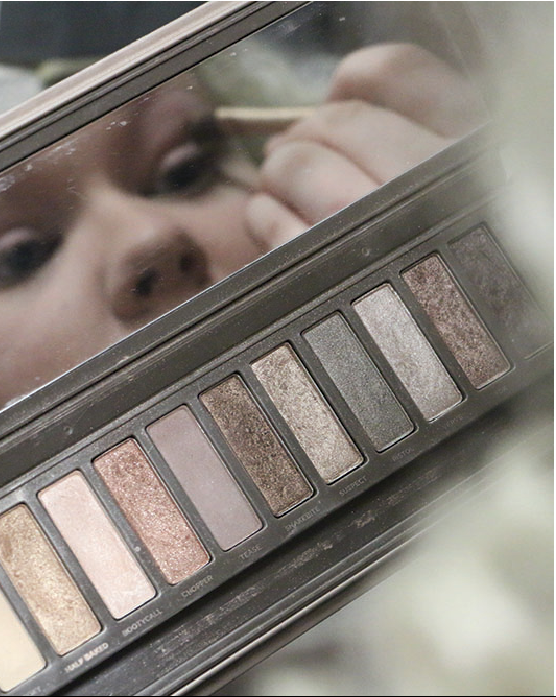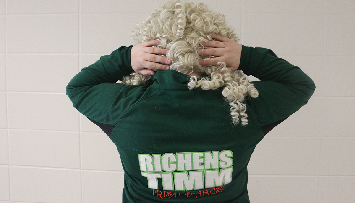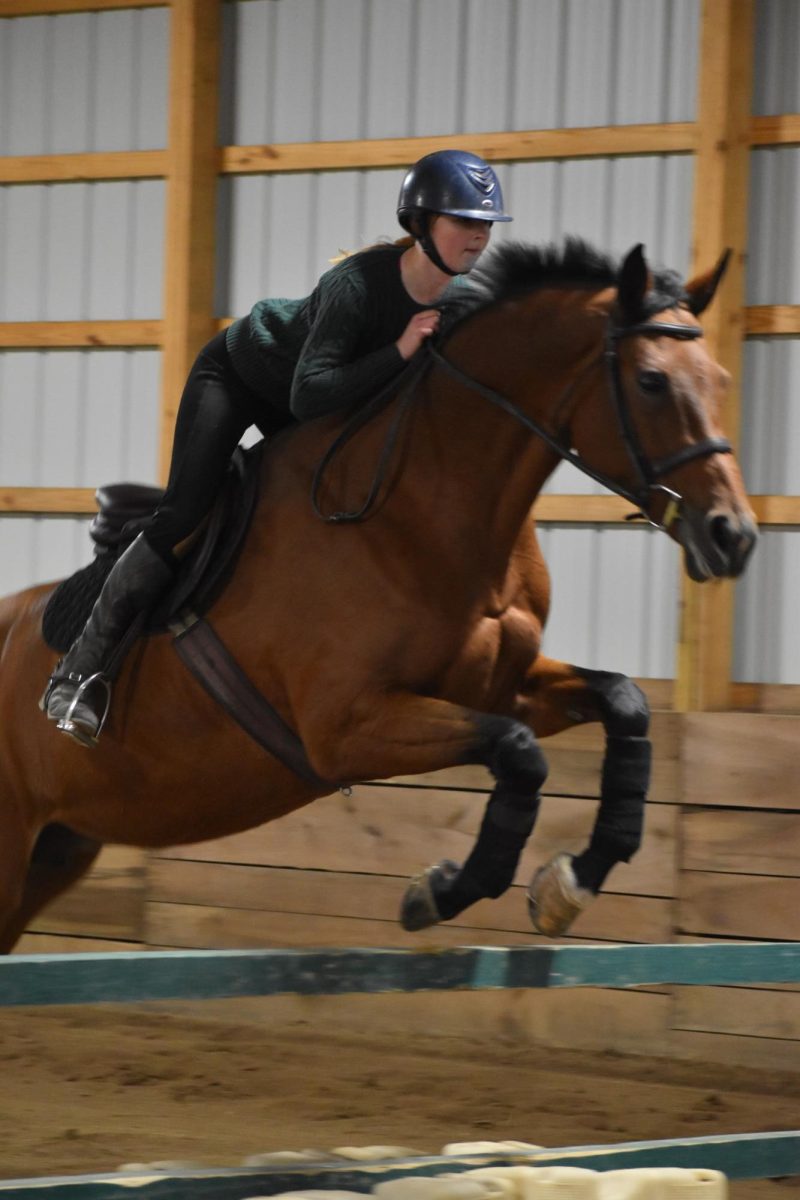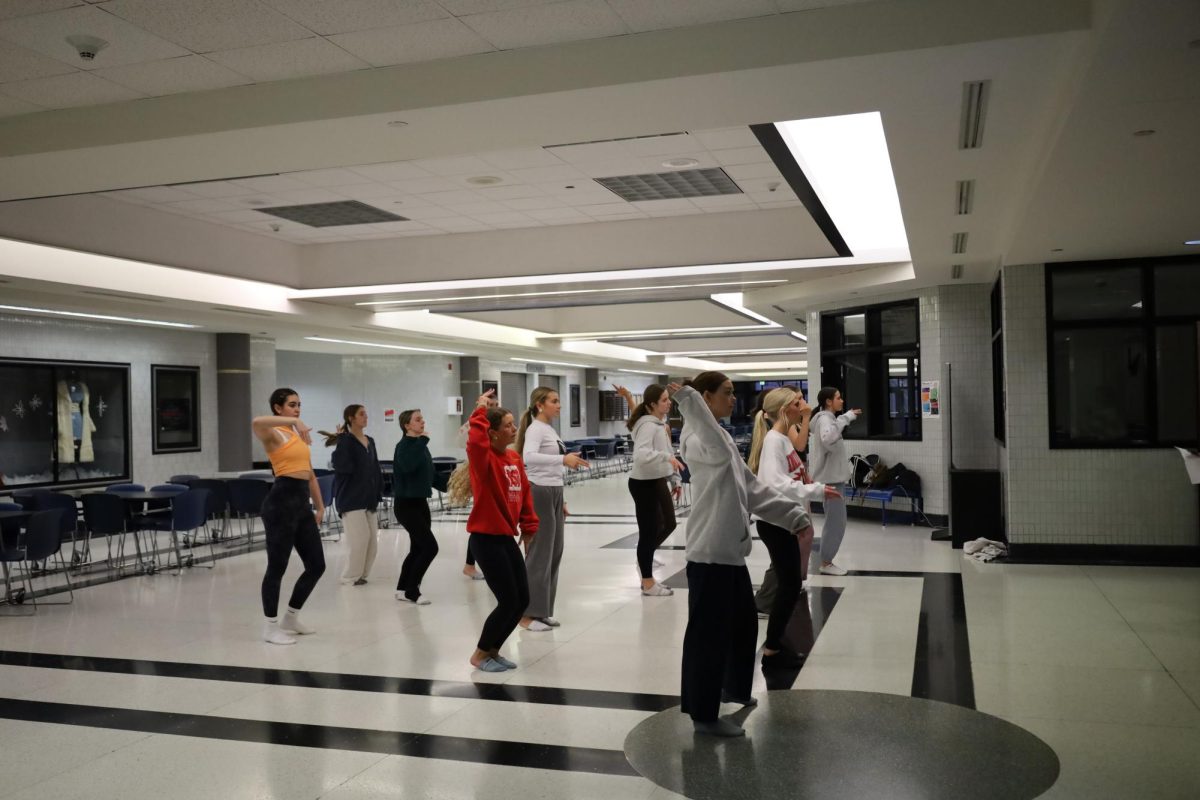
Since she was about 5 years old, sophomore Annie Rose wanted to be an Irish dancer; her grandmother was an Irish dancer, so Rose began dancing at the Richens/Timm Academy of Irish Dance in sixth grade. Through Irish dance, Rose said she not only feels more connected to her grandmother, but also to the Irish culture.
“(I feel more connected) especially with the events that we do. We dance at fish fries, Catholic churches or Irish Catholic stuff, and then St. Patrick’s Day. It definitely makes me feel more connected to (Irish culture),” Rose said.
Rose said she is also able to spread her love for Irish culture by performing in the Richens/Timm St. Patrick’s Day tour. For the tour, dance students perform at different schools in and Indianapolis, along with several pubs and the St. Patrick’s Day parade.
“It’s a very fast-paced day,” Rose said. “You go into a school, dance and then you have to be out of there because you have call times for every single place that you’re going. It’s, I wouldn’t say high-stress, but it’s a very rushed situation, yet really fun.”
Joan Kaster, a mother of seven children who have all danced for Richens/Timm, said over 200 families participate in the tour every year. Kaster said students who perform come from varying skill sets.
“Of course, the thing people really like to see is when they wear the hard shoes because those make more noise. They do a soft shoe element as well. It’s really fun,” she said.
As for the history of Irish dancing, Rose said she only knows the myth associated with it.
“There’s this myth where the British invaded Ireland, they pulled a ‘Footloose’ and outlawed dancing because they thought it was defiance, so the Irish would dance with their arms down so it didn’t look like they were dancing,” Rose said. “That’s the myth behind it, and the thing that everyone says, but also it’s just an art form from Ireland that’s used in a lot of celebrations.”

Over the years, specific moves performed by Irish dancers, such as a treble reel—typically a line of dancers in hard shoes—or a slow hornpipe—a dance done to slow hornpipe music but is very fast and rigorous—have remained the same as time has passed, but with bigger tricks.
“It just depends on the individual choreography that each teacher comes up with,” Kaster said. “Most of it’s inspired by what they learned when they were younger. They just put their own modern little twist on it.”
One major piece of modern Irish dance culture is the outfits. Richens/Timm has its own academy costume embroidered with Celtic symbols worn for group performances. However, solo dancers also have outfits unique to them.
 “Your solo dress is something that you earn, and you can design it so it makes you more flashy,” Rose said. “Usually, judges will be watching the people with the better dress, or a dress that catches their eye more. You want something that looks better so you get looked at by the judges more.”
“Your solo dress is something that you earn, and you can design it so it makes you more flashy,” Rose said. “Usually, judges will be watching the people with the better dress, or a dress that catches their eye more. You want something that looks better so you get looked at by the judges more.”
Irish dancers also wear either hard or soft shoes for certain dances. Sophomore Gabriel Greener, who has been dancing for Richens/Timm for nine years, said the soft shoes are slightly different for male dancers.
“When we do a soft shoe dance, meaning it’s a little bit quieter, guys have a heel that has a hard bottom, that way you can click your heels together while you dance,” Greener said.
Another factor of modern Irish dance culture, Rose said, is the competitiveness and hard work that goes into every performance and competition. Greener said the week before events are high-stress.
 “You’ve got to have your steps memorized,” Greener said. “Something that I always struggled with for performances is getting my timing right and not messing up the counts, which I still sometimes will mess up during practice, but not as much during competition.”
“You’ve got to have your steps memorized,” Greener said. “Something that I always struggled with for performances is getting my timing right and not messing up the counts, which I still sometimes will mess up during practice, but not as much during competition.”
Rose said many months of preparation go into every performance and the final product and overall experience makes it all worthwhile.
Rose said, “Even if you don’t particularly want to be an Irish dancer … if you go to the performances and stuff, it’s such a great experience and I encourage you to go to (watch) any performance you can.”
































![British royalty are American celebrities [opinion]](https://hilite.org/wp-content/uploads/2024/03/Screenshot-2024-03-24-1.44.57-PM.png)




















![Review: Quiet on Set: The Dark Side of Kids TV is the long awaited exposé of pedophilia within the children’s entertainment industry [MUSE]](https://hilite.org/wp-content/uploads/2024/04/unnamed.jpg)
![Review: “The Iron Claw” cannot get enough praise [MUSE]](https://hilite.org/wp-content/uploads/2024/04/unnamed.png)
![Review: “The Bear” sets an unbelievably high bar for future comedy shows [MUSE]](https://hilite.org/wp-content/uploads/2024/03/unnamed.png)
![Review: “Mysterious Lotus Casebook” is an amazing historical Chinese drama [MUSE]](https://hilite.org/wp-content/uploads/2024/03/0.webp)
![Thea Bendaly on her Instagram-run crochet shop [Biz Buzz]](https://hilite.org/wp-content/uploads/2024/03/IMG_0165-1200x838.jpg)
![Review in Print: Maripaz Villar brings a delightfully unique style to the world of WEBTOON [MUSE]](https://hilite.org/wp-content/uploads/2023/12/maripazcover-1200x960.jpg)
![Review: “The Sword of Kaigen” is a masterpiece [MUSE]](https://hilite.org/wp-content/uploads/2023/11/Screenshot-2023-11-26-201051.png)
![Review: Gateron Oil Kings, great linear switches, okay price [MUSE]](https://hilite.org/wp-content/uploads/2023/11/Screenshot-2023-11-26-200553.png)
![Review: “A Haunting in Venice” is a significant improvement from other Agatha Christie adaptations [MUSE]](https://hilite.org/wp-content/uploads/2023/11/e7ee2938a6d422669771bce6d8088521.jpg)
![Review: A Thanksgiving story from elementary school, still just as interesting [MUSE]](https://hilite.org/wp-content/uploads/2023/11/Screenshot-2023-11-26-195514-987x1200.png)
![Review: When I Fly Towards You, cute, uplifting youth drama [MUSE]](https://hilite.org/wp-content/uploads/2023/09/When-I-Fly-Towards-You-Chinese-drama.png)
![Postcards from Muse: Hawaii Travel Diary [MUSE]](https://hilite.org/wp-content/uploads/2023/09/My-project-1-1200x1200.jpg)
![Review: Ladybug & Cat Noir: The Movie, departure from original show [MUSE]](https://hilite.org/wp-content/uploads/2023/09/Ladybug__Cat_Noir_-_The_Movie_poster.jpg)
![Review in Print: Hidden Love is the cute, uplifting drama everyone needs [MUSE]](https://hilite.org/wp-content/uploads/2023/09/hiddenlovecover-e1693597208225-1030x1200.png)
![Review in Print: Heartstopper is the heartwarming queer romance we all need [MUSE]](https://hilite.org/wp-content/uploads/2023/08/museheartstoppercover-1200x654.png)























![Review: Ladybug & Cat Noir: The Movie, departure from original show [MUSE]](https://hilite.org/wp-content/uploads/2023/09/Ladybug__Cat_Noir_-_The_Movie_poster-221x300.jpg)

![Review: Next in Fashion season two survives changes, becomes a valuable pop culture artifact [MUSE]](https://hilite.org/wp-content/uploads/2023/03/Screen-Shot-2023-03-09-at-11.05.05-AM-300x214.png)
![Review: Is The Stormlight Archive worth it? [MUSE]](https://hilite.org/wp-content/uploads/2023/10/unnamed-1-184x300.png)



